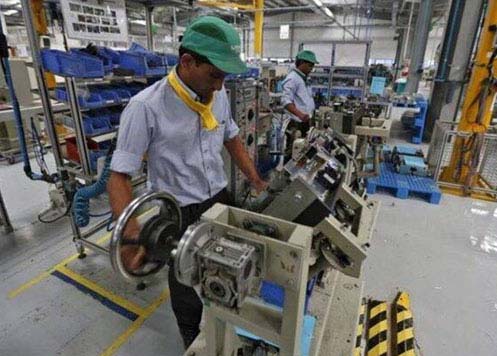Hedging your bets: How globalisation can enable manufacturers to grow sustainably amid Covid

Companies that were able to conduct business globally, saw more revenue come in from overseas markets than India and thus experienced significantly lower disruptions in the revenues.
Covid-19 has been an unprecedented crisis. The past twelve months have been both turbulent and testing for companies worldwide, and in particular, for manufacturers who have had to contend with unprecedented supply chain disruptions and demand volatility. As the pandemic unfolded, industrial production across the globe declined sharply causing much concern. For instance, industrial production in the US declined steeply in April 2020 (-16.5% year over year), the European manufacturing industry witnessed declines in March and April, while industrial production did marginally grow thereafter and is now stabilizing. Quite like the rest of the world, the Middle East and Southeast Asia saw a dip in revenue coupled with sourcing disruptions, which negatively impacted local manufacturers. The lockdown in India was more severe than in countries elsewhere. There has been a gradual improvement since, but production is yet to reach pre-pandemic levels.
If we thought of the pandemic as a massive wave that douses all it meets, if one was on a higher rock than the others, chances are you would have been less affected. So, companies that did have a global footprint as a firm, with a broad customer base across countries, saw their risk spread out while they weathered regional challenges in the short run. In short, companies that were able to conduct business globally, saw more revenue come in from overseas markets than India and thus experienced significantly lower disruptions in the revenues.
The fundamental inference here is that a global presence enables companies to build a countercyclical buffer to demand crunch in any specific market. Companies must build competitive advantages that enable them to provide a compelling value to customers, globally. Building a global business takes time, especially for an Indian company and therefore it requires a deliberate and sustained commitment to a course of action towards this destination.
An honest assessment of current capabilities should inform how the company chooses to play in its markets, as well as partnerships or acquisitions that may be necessary. Acquisitions are a quick way of augmenting your position across the world. An expansionist mindset helps growth, even when there is a temptation to stick to your comfort zone in business.
Manufacturing companies also adopted other innovative strategies such as risk monitoring tools to weather the pandemic better. These tools monitored hundreds of thousands of digital sources to identify risks, enabling companies to predict country shutdowns days in advance. Staying ahead of the curve helped them accelerate the shipping of supplies out of the countries in question. They also used this insight to line up alternate sources of supplies, gaining a competitive advantage.
Agile firms had domestic sources for components similar to those unavailable due to the pandemic-induced Chinese industrial shutdown. They were able to offer customers the option of a similar product to the one they had ordered, rather than an exact match, thereby being able to meet deadlines without unduly compromising on customer satisfaction. In the wake of new realities such as digitalization, the digitisation of supply chains, automation, and other industry 4.0 initiatives will better equip manufacturing companies to handle the next global crisis, in addition to a comprehensive globalisation strategy.
Undisputedly, 2020 was not a favorable year for the economy and the industry as a whole, however, one could be optimistic about the future silver lining amidst the gray stormy clouds. The COVID-19 outbreak and the commotion in the supply of finished goods for global markets, as well as raw materials for businesses and industries everywhere from China, have led to a comprehensive evaluation of current supply chain structures.
A recently published Deloitte study reveals over 33% of manufacturing supply chain firms have shifted some of their operations away from China, or intend to do so over the next couple of years. Several industries have realized the drawbacks of being disproportionately dependent on manufacturing in a single country and are looking to expand the geographic spread of their facilities.
India has the potential to become the next global manufacturing hub. This could create opportunities for the Indian manufacturing industry with its skilled talent pool and natural resources. Governments are encouraging this trend with tax breaks and other incentives. So, there is an opportunity for manufacturing firms to change the complexion of their business from being India-centric to globally focused.
With the pandemic still ongoing, manufacturing firms that hedge against the risk of local lockdowns by developing a global presence will do better than their peers. Acquisitions are one way they can quickly expand market share across regions, albeit with some costs and risks.
Simultaneously, they should factor in risks as well as costs when deciding on their supply chain mix, to mitigate the effects of crises that span the world. A plant in one country could be affected one day, and a distribution center in another. Companies now need to be agile at the global level as crises increase in complexity and breadth.
“With COVID-19, we’ve made it to the life raft. Dryland is far away,” said epidemiologist Marc Lipsitch. This applies to business as well; we need to plan for crises, conserve resources and innovate to stimulate customer demand and move ahead of the competition.
Dr Jairam Varadaraj is the Managing Director at ELGi Equipments. Views expressed are the author’s own.
READ MORE
